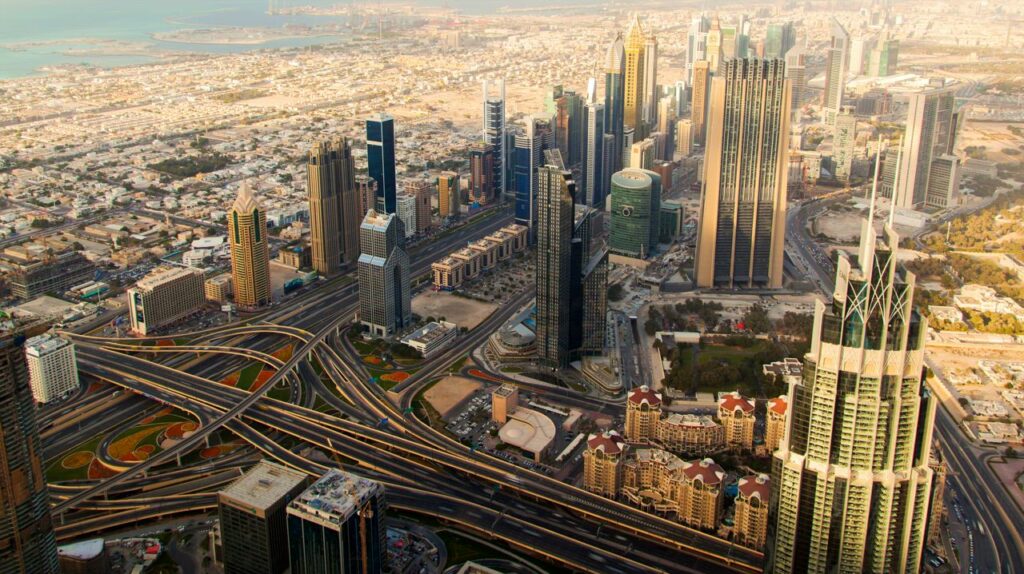In the heart of the United Arab Emirates, two of the most prominent emirates, Dubai and Sharjah, often find themselves compared. With their close proximity—just about 15 kilometers apart—it’s easy to see why many wonder: Are Dubai and Sharjah the same? While they share a rich cultural heritage and are part of the UAE’s seven emirates, these two cities offer vastly different experiences, lifestyles, and characteristics. In this article, we’ll explore the distinctions and similarities between Dubai and Sharjah, helping to clarify what sets them apart while acknowledging their shared identity.
Geography: The Landscape of Two Emirates
Dubai and Sharjah are located along the Arabian Gulf coast, each possessing unique geographical features. Dubai, known for its sprawling skyline dominated by the iconic Burj Khalifa, is a global hub for commerce, tourism, and luxury living. Its coastal areas are adorned with pristine beaches, extravagant shopping malls, and world-renowned attractions.
Sharjah, on the other hand, is recognized for its commitment to preserving the Emirati culture and heritage. It is the only emirate that has been designated as a Cultural Capital of the Arab World by UNESCO. Sharjah is home to numerous museums, art galleries, and cultural institutions, making it an ideal destination for those seeking a deeper understanding of Emirati traditions and history. Its landscapes feature a mix of urban and traditional environments, with bustling markets and charming neighborhoods.

Economic Differences: Modernity vs. Tradition
Dubai is synonymous with modernity and wealth. The emirate has established itself as a global financial center, attracting businesses and investors from around the world. With a focus on luxury tourism, real estate, and technology, Dubai’s economy thrives on innovation and global commerce. The Dubai Shopping Festival, GITEX Technology Week, and Art Dubai are just a few events that showcase the emirate’s dynamic economy.
In contrast, Sharjah’s economy is more traditional and less commercialized. While it is home to various industries, including manufacturing and education, it prioritizes cultural and artistic endeavors over luxury. Sharjah’s vibrant local markets, known as souks, offer a more authentic shopping experience, featuring traditional crafts, spices, and textiles. The Sharjah International Book Fair and the Sharjah Biennial highlight the emirate’s dedication to literature and the arts.

Cultural Identity: Embracing Heritage vs. Globalization
Culturally, Dubai and Sharjah represent two different philosophies. Dubai is often seen as the cosmopolitan capital of the UAE, with a diverse expatriate population that has transformed the city into a melting pot of cultures. While Dubai celebrates global influences, it has also embraced aspects of Emirati culture, incorporating traditional elements into its modern landscape.
Sharjah, however, stands firm in its commitment to preserving Emirati heritage. The emirate is known for its cultural institutions, such as the Sharjah Art Foundation and the Sharjah Heritage Museum, which provide insight into the history and traditions of the UAE. Events like the Sharjah Arts Foundation’s biennial and Sharjah International Film Festival reflect its dedication to showcasing Arab culture and talent.
Lifestyle: The Pulse of Two Cities
The lifestyle in Dubai and Sharjah also varies significantly. In Dubai, residents enjoy a fast-paced, glamorous lifestyle filled with high-end shopping, fine dining, and vibrant nightlife. The emirate’s numerous entertainment options, including theme parks, beach clubs, and luxury hotels, attract both tourists and locals seeking excitement.
In contrast, Sharjah promotes a more family-oriented and community-centric lifestyle. The emirate offers parks, beaches, and family-friendly attractions, making it a popular choice for those seeking a quieter environment. The emphasis on culture and education is evident in the various community events and workshops that cater to families and children.
Transportation and Connectivity
Both Dubai and Sharjah benefit from excellent transportation networks, but they differ in their infrastructure. Dubai’s Dubai Metro is a modern, efficient public transportation system that connects key areas of the city, while its extensive road network allows for easy travel throughout the emirate. Taxis and ride-sharing services are also readily available.
Sharjah, while well-connected by road, has fewer public transportation options compared to Dubai. However, there are bus services that link Sharjah to Dubai, making it convenient for residents and visitors to commute between the two emirates. As Sharjah continues to grow, there are plans to enhance its transportation infrastructure to improve connectivity.
Conclusion: Two Distinct Emirates with Shared Identity
While Dubai and Sharjah are geographically close and share some cultural ties, they are distinctly different in terms of lifestyle, economic focus, and cultural identity. Dubai shines as a beacon of modernity and global influence, attracting tourists and investors with its luxurious offerings. Sharjah, in contrast, serves as a custodian of Emirati heritage, providing a deeper understanding of the region’s culture and traditions.
In essence, these two emirates complement each other, each offering unique experiences and insights into the richness of the UAE. Whether you’re seeking the fast-paced luxury of Dubai or the cultural depth of Sharjah, both emirates play a vital role in the vibrant tapestry of the United Arab Emirates, celebrating their individual identities while contributing to the nation as a whole.
Click here to check UAE STORIES website .
Do follow UAE STORIES instagram .















